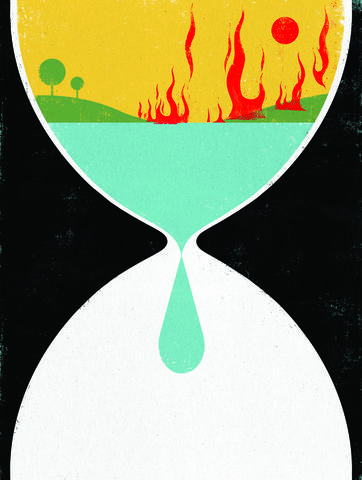It’s clear: the stresses and conflicts created by resource scarcity have far-reaching impacts for our planet and the prosperity of billions. Food, fibers and fresh water come from nature. Businesses rely on the natural materials that are, or make up, the goods they sell. Local communities depend on reliable water, crops and fish. Sustainable access to natural resources is essential to all of our lives.
But despite extraordinary efforts to conserve our natural resources, we are witnessing widespread deforestation, overfishing, accelerating losses of biodiversity, and the depletion of aquifers. We’re also seeing sea level rise and more frequent and harsher weather phenomena such as droughts, floods and hurricanes. The impacts are enduring and severe.
To turn the tide, World Wildlife Fund is tackling those issues head on.
At the December, 2015 global climate talks in Paris, heads of state from around the world will focus on climate change; the year leading up to that event offers a rare window for action. March, 2015 serves as a deadline for nations to announce new commitments to cut carbon pollution at home, and to move decisively toward 100% clean energy. US leadership, in particular, is vital to encouraging other countries to act. Together with thousands of partners, WWF will call for strong action. Find out more at about what WWF is doing to fight climate change.
This year, we also launched the In Pursuit of Prosperity initiative, which aspires to make environmental sustainability a central tenet of the way the US works with other nations. A diverse set of voices is beginning to set the stage for a robust discussion about the merits of strategies to tackle the problem. This magazine features the perspective of two of America’s leading foreign policy experts; In Pursuit of Prosperity (Routledge, 2014) features many more.
Edited by WWF Senior Policy Advisor David Reed, the book examines critical challenges to US prosperity and national security, and includes chapters on the strategic balancing act facing India, water scarcity along the US-Mexico border, and emerging challenges for Russia and the US in the Arctic. Authors include former ambassadors, US State Department officials and conservationists, in addition to policy experts from institutions including the Woodrow Wilson Center and the Center for Strategic and International Studies.
Only by coming together to raise the profile and gravity of these issues will we accelerate our transition to a US foreign policy that is more responsive to rapidly changing global environmental conditions, resource scarcity, ecosystem degradation and the accompanying economic challenges.
Learn more about WWF's "In Pursuit of Prosperity" initiative.




